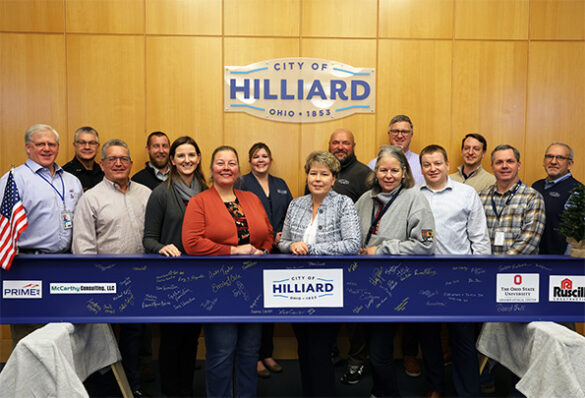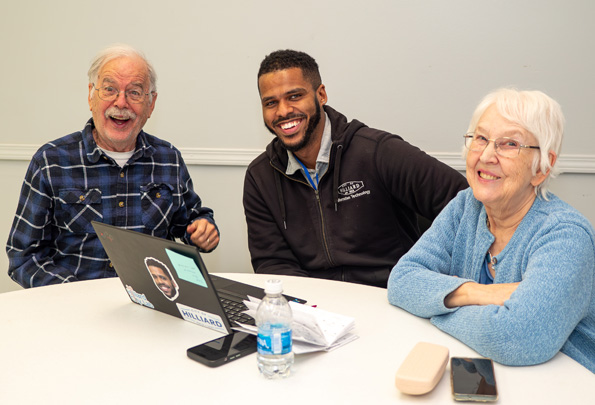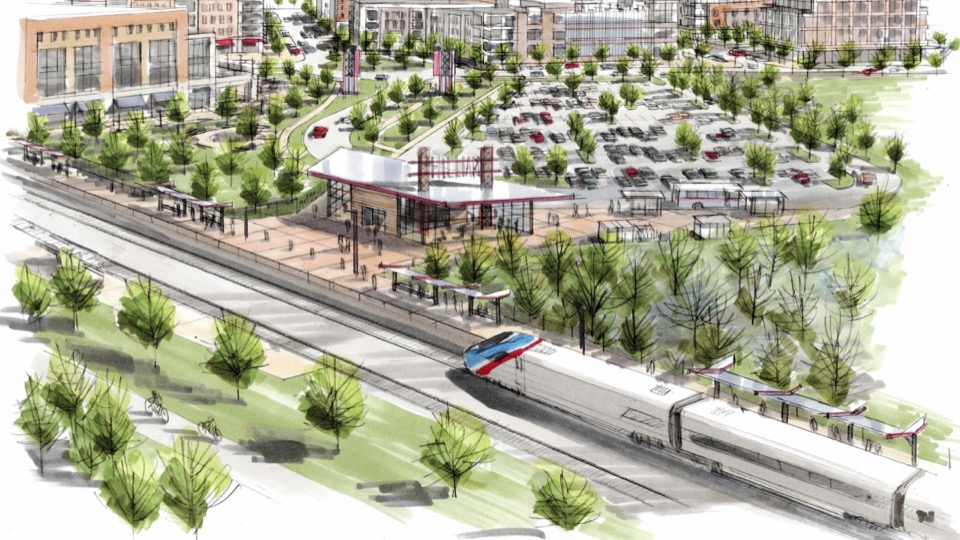Decades ago, the City of Hilliard’s transportation engineers had no official plans for connecting bike paths in the community – just markers and a map.
Those days are long gone.
Today, leaders proactively research, develop, and implement plans years in advance to provide connectivity to the City’s residents and visitors. The infrastructure’s evolution has resulted in a community that’s not only charming and appealing, but easier to navigate as a pedestrian and cyclist.
“Walking and bicycling means a lot to our community,” said Letty Schamp, the City’s Transportation and Mobility Director. “So, we plan trail connectivity between neighborhoods and key destinations, such as parks and neighborhood commercial areas, and we design this type of infrastructure with safety in mind. We want to encourage residents to explore our community and stop and support businesses.”
In 2013, Schamp championed the creation of a new capital improvement program that devoted funding specifically to pedestrian and bicycle mobility projects that promote safety. Engineers have a running list of projects that have been requested by citizens or identified through comprehensive plans or safety plans.
“Every year we look at the list and identify what we can do,” Schamp explained.
Among those completed projects is the extension of the Hellbranch Trail through Roger A. Reynolds Municipal Park, numerous crosswalk improvements, and the addition of shared use paths along Scioto Darby Road and through the campus of The Well – the City’s new recreation and wellness center scheduled to open later in 2025.
In 2021, the City of Hilliard launched a process called Hilliard by Design to create a major update to the City’s 2011 Comprehensive Plan. The process led to a bold vision, a series of big ideas, goals, and actions that are based on the values, needs, and aspirations of the community.
This plan sets the direction for the city’s growth and development and serves as a guide for decision-makers and the community for future development and many aspects of resident quality of life.
Specifically, the plan calls for expanding opportunities for walking and biking by filling in gaps in the trail network and conserving a greenbelt on the city’s western edge that connects to neighborhoods and regional parks.
A longtime priority is extending the Heritage Trail to Hilliard’s southern boundary to make connections to the Quarry Trails Metro Park and downtown Columbus. This connection would create other regional destinations through the Central Ohio Greenways Network.
“Now that negotiations with the railroad company are progressing and we have a revenue stream with the passage of COTA’s LinkUS, I feel confident this is going to happen,” Schamp said.
Looking forward, there are plans for changes to the Hellbranch Trail along Heritage Club Drive in 2025, and an extension of the Hayden Run Trail from Eventing Way to Avery Road in 2026 or 2027.
Schamp also hopes to see the realization of the trail town concept, another goal listed in the comprehensive plan.
“It’s not just having a trail through your town – it’s about a way of life, a mojo,” she said.
The goal is for trail users to explore the community, stop in local businesses, get what they need (water, restrooms, bike repair) and get back on the trail without getting lost. Similarly, it means residents and businesses are welcoming and helpful to visitors, creating a culture that’s mutually beneficial.
Schamp said creating connections is “the best feeling ever,” citing their benefits to transportation, health, and mental wellness.
“When we built the trails along Scioto Darby Road, I saw an older couple – one in a walker and the other walking next to them – able to get out and exercise together, and that really stuck with me,” she said. “That’s why I do my job.”










